You’re texting a friend: “My job is a circus.” They reply, “Same. My boss is a clown.”
Viral potential? Maybe.
But congrats—you both just used figurative language without breaking a sweat.
Let’s break down how this works (and why you’ll never write a boring sentence again).
You’ll learn how figurative language works in real life with the help of examples in this blog.
What Is Figurative Language?
It’s a language that isn’t literal.
Instead of saying exactly what you mean, you compare, exaggerate, or personify to spark imagination.
- Literal: “I’m busy.”
- Figurative: “I’m juggling chainsaws on a tightrope.”
They are like emojis for your sentences— instead of “life is unpredictable,” or 🌪️ instead of “chaotic day.”
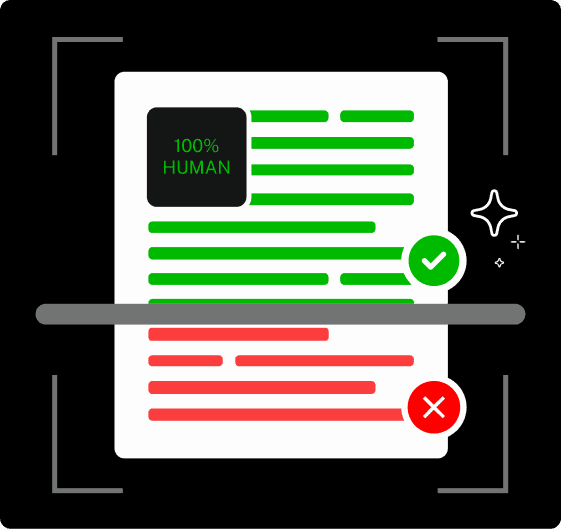

Never Worry About AI Detecting Your Texts Again. Undetectable AI Can Help You:
- Make your AI assisted writing appear human-like.
- Bypass all major AI detection tools with just one click.
- Use AI safely and confidently in school and work.
And, why do you need to understand figurative language and use it?
- Flavor Over Fact: “Social media is a time vampire” > “Social media wastes time.”
- Simplify Complexity: “Climate change is a ticking clock” > “Climate change is urgent.”
- Make Feelings Stick: “Guilt is a backseat driver” > “Guilt nags me.”
Why Do Writers Use Figurative Language?
So, you’re randomly scrolling Instagram and see: “Chaos is my co-pilot.” You laugh, screenshot it, and share it.
That’s figurative language working its magic—turning a basic truth (“Life is unpredictable”) into something sticky, shareable, and human.
Writers don’t use metaphors, similes, or personification just to sound fancy. They do it to hijack your brain.
Here’s how—and why you’ll want to steal these tricks:
1. To Make Boring Stuff Unforgettable
Literal: “Social media is addictive.”
Figurative: “Social media is a slot machine in your pocket.”
Why it works: Your brain lights up imagining neon lights and dopamine hits. Suddenly, you feel the addiction, not just know it.
Writers use this in:
- Ads: Red Bull “gives you wings” (hyperbole).
- Songs: “Love is a battlefield” (metaphor).
- Tweets: “Adulting is whack-a-mole with bills” (analogy).
2. To Simplify Ideas
Literal: “Climate change is urgent.”
Figurative: “The planet is a ticking time bomb.”
Why it works: Complex topics become visceral. You don’t need a PhD to visualize a countdown.
Examples:
- Politics: “The economy is a rollercoaster” (instead of GDP charts).
- Tech: “AI is a double-edged sword” (ethics made relatable).
3. To Make You Feel (Not Just Think)
Literal: “She was sad.”
Figurative: “Her heart was a shattered vase.”
Why it works: Sadness becomes tangible.
Writers weaponize this in:
- Novels: “Hope is a feather” (Life of Pi) → Fragility.
- Speeches: “The arc of the moral universe bends toward justice” (MLK) → Optimism as motion.
4. To Turn You Into a Co-Creator
Literal: “The city is busy.”
Figurative: “The city never sleeps.”
Why it works: Your brain fills the gaps. Is it nightlife? Traffic? Workaholics? You decide.
This is why:
- Brands say “Think different” (Apple) → You imagine rebels, not computers.
- Memes use “My social battery is dead” → You feel the exhaustion.
5. To Stand Out in a Sea of Blah
Literal: “Work is stressful.”
Figurative: “Work is a never-ending Zoom call where everyone’s on mute.”
Why it works: In a world of robotic emails and AI-generated text, figurative language is uniquely human.
It’s your fingerprint on words.
Key Types of Figurative Language (With Examples)
Let’s cut to the chase:
Figurative language is like a Swiss Army knife for your words. It has a tool for every mood—drama, humor, sarcasm, or heartbreak.
Here are the 5 essential types you’ll spot everywhere (yes, even in your group chat).
1. Metaphor:
What it does: Compares two things without “like” or “as.”
Why it slaps: Turns abstract ideas into concrete images.
- “My inbox is a black hole.”
- “The meeting was a snooze fest.”
Pro Tip: Use metaphors to sound bold. Swap “Life is hard” with “Life is a glitchy video game.”
2. Simile: The “Like” or “As” Flex
What it does: It compares things with “like” or “as.”
Why it works: Adds flair without commitment.
- “Scrolling TikTok is like falling into a wormhole.”
- “My boss is as subtle as a fireworks show.”
Pro Tip: Great for roasts. “Your jokes are like a broken pencil—pointless.”
3. Personification:
What it does: Gives human traits to non-human things.
Why it’s iconic: Makes the world feel alive (or hilariously petty).
- “My Wi-Fi ghosted me.”
- “The wind screamed through the cracks.”
Pro Tip: Use it to gripe about tech. “My printer hates Mondays.”
4. Hyperbole: The Over-the-Top King
What it does: Wild exaggeration for effect.
Why we love it: Because drama = attention.
- “I’ve watched that clip a million times.”
- “This meeting will never end.”
Pro Tip: Perfect for texts. “My laundry pile is Mount Everest.”
5. Idiom:
What it does: A phrase whose meaning can’t be guessed from its words.
Why it’s gold: Adds flavor only insiders get.
- “Spill the tea” (Gossip, not beverages).
- “Break a leg” (Good luck, not violence).
- “Ghost someone” (Ignore, not haunt).
Pro Tip: Use idioms to sound relatable—but avoid them in formal essays (“kick the bucket” ≠ academic).
How to Spot These in the World?
- Songs: “Love is a battlefield” (metaphor).
- Ads: “Melts in your mouth, not in your hands” (simile).
- Memes: “My bank account is crying” (personification).
- Idioms: “That project went up in smoke” (Failed, not literally burned).
Figurative language isn’t just for poets—it’s your cheat code to make small talk sparkle, emails pop, and rants go viral.
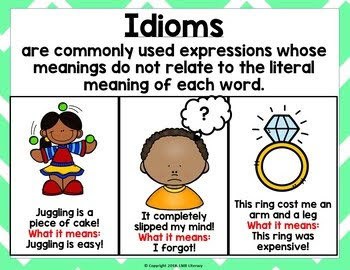
Figurative vs Literal Language
Let’s end the confusion between figurative and literal language.
Literal Language:
Definition: Words mean exactly what they say. No hidden meanings, no metaphors, no drama.
Examples:
- “I’m tired.”
- “It’s raining.”
- “The meeting starts at 3 PM.”
Why it matters: Clarity. Use it in instructions, contracts, or when your roommate actually needs to know you’re literally out of milk.
Figurative Language:
Definition: Words mean more than they say. It’s wordplay—metaphors, idioms, hyperbole—to spark imagination or emotion.
Examples:
- “I’m dead tired.” → Exhausted, not a zombie.
- “It’s raining cats and dogs.” → Heavy rain, no pets falling.
- “The meeting was a dumpster fire.” → Chaos, not actual flames.
Why it matters: Makes ideas vivid, relatable, or hilarious. Use it in stories, jokes, or to describe your Mondays.
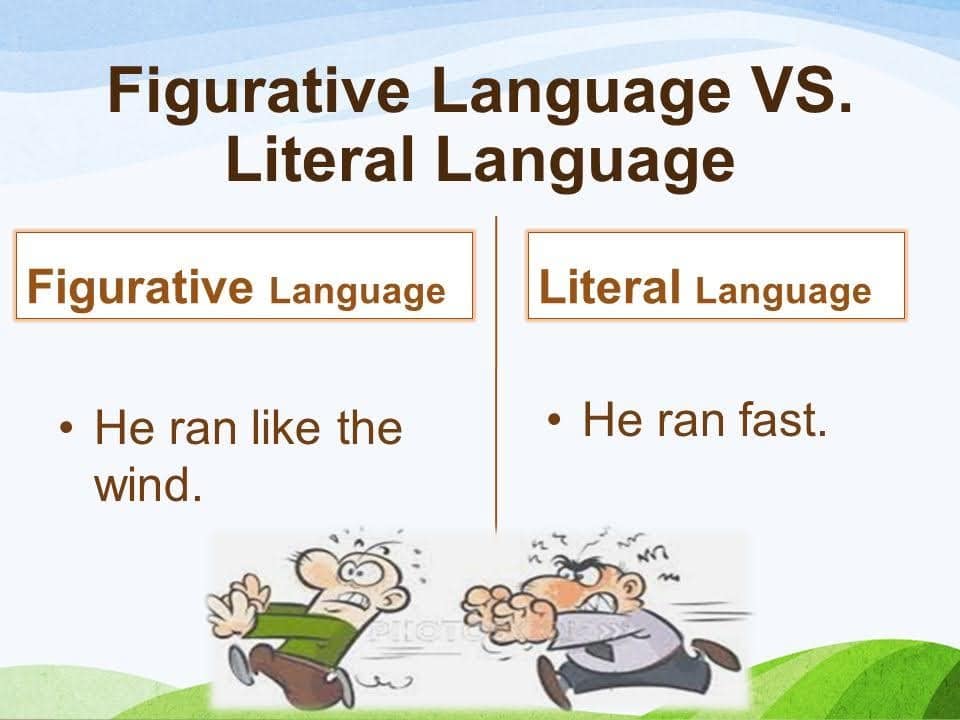
How to Spot the Difference?
- Ask: “Is this exactly true?”
- “I’m starving” → No, you’re hungry. Figurative.
- “I haven’t eaten” → Fact. Literal.
- Look for:
- Exaggeration (“I’ve got tons of work”).
- Comparisons (“Cool as a cucumber”).
- Idioms (“Spill the tea” = gossip).
Figurative Language in Literature & Pop Culture
You’re singing along to Taylor Swift’s “Love is a game, wanna play?” or rewatching The Hunger Games line “The Capitol loves a good show.”
That’s figurative language—metaphors, metonymy, hyperbole—doing the heavy lifting to make stories and songs stick.
Let’s dissect how it rules both dusty classics and viral TikToks.
Literature: Where Figurative Language Gets Fancy:
Writers use it to turn ink into vibes.
- Shakespeare’s Smoke Shows:
- “All the world’s a stage” → Metaphor (Life ≠ literal theater, but drama? Absolutely).
- “Juliet is the sun” → Metaphor (Romeo’s saying she’s his everything, not a flaming ball of gas).
- Modern Magic:
- Harry Potter: “The Dursleys were as welcoming as a skunk at a lawn party” → Simile (J.K. Rowling throwing shade).
- The Hunger Games: “Fire is catching” → Metaphor (Revolution, not arson).
Pop Culture: Where Figurative Language Gets Loud
It’s not just for books—it’s in your playlist, Netflix queue, and meme stash.
- Songs That Slap:
- Beyoncé’s “I’m a queen” → Metaphor (Confidence anthem).
- Olivia Rodrigo’s “Traitor” → Hyperbole (Drama dialed to 11).
- Movies & TV:
- Breaking Bad: “I am the danger” → Metaphor (Walter White’s ego, quantified).
- Barbie: “I’m a stereotypical Barbie in a stereotypical Barbie world” → Irony (Literal + figurative sass).
- Memes & Social Media:
- “My social battery is dead” → Personification (Battery ≠ human, but felt).
- “The algorithm is judging me” → Metonymy (Algorithm = faceless tech overlords).
You can even spot them in:
- Books: Look for dramatic comparisons (“Her smile was a knife”).
- Songs: Listen for over-the-top lines (“I’d burn the world for you”).
- Social Media: Catch idioms (“Spill the tea”) or metaphors (“This app is a black hole”).
How to Spot Figurative Language in Writing
Here’s how to spot figurative language in seconds—no PhD required—and how AI Chat can be your cheat code.
You can look for unusual comparisons,
Example:
- “Time is a thief.” → Time ≠ criminal. Metaphor!
AI Chat to the Rescue:
You: “Is ‘time is a thief’ literal?”
AI: “No. It’s a metaphor. Time isn’t literally stealing, but it feels like it.”
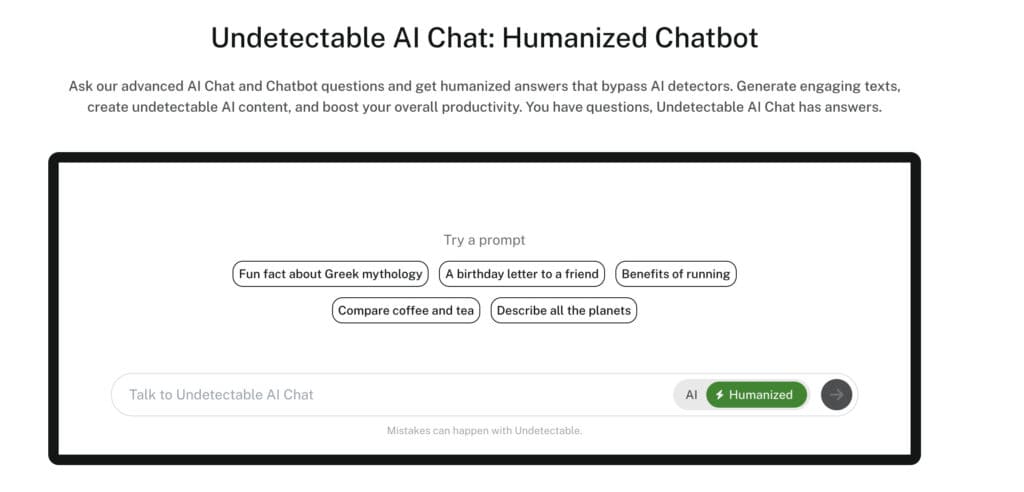
Another way is to use context clues like,
Ask: “Does this make sense literally? If not, it’s figurative.”
Example:
- “The Capitol is ruthless.” → A place can’t be “ruthless.” Metonymy!
You: “Is ‘The Capitol’ literal here?”
AI: “No. It’s metonymy. ‘The Capitol’ represents the government in The Hunger Games.”
FAQs About Figurative Language
Is figurative language only used in poetry?
Nope! Figurative language sneaks into daily life, sharpening dull moments into vivid, relatable snapshots.
You can see the figurative language in ads, social media and even in novels.
Pro Tip: Use our AI Paraphraser to spice up boring texts. “Work is busy” → “Work is a three-ring circus.”
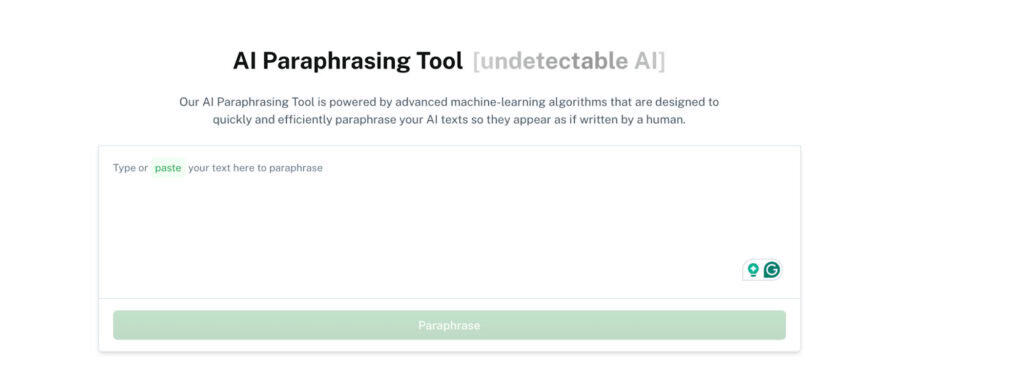
Don’t miss the chance to explore our AI Detector and Humanizer in the widget below!
Can figurative language be used in essays?
Yes—if done strategically. It adds flair without sacrificing professionalism:
Weak: “The economy is unstable.”
Stronger: “The economy is a rollercoaster of uncertainty.” (metaphor).
Is figurative language the same as a literary device?
It’s a type of literary device. Think of literary devices as tools in a toolbox: Figurative Language are Metaphors, similes, hyperbole while other tools are Foreshadowing, irony, alliteration.
Example: “The world is a stage” (figurative language) vs. “I’ll see you tomorrow” (foreshadowing).
What’s the opposite of figurative language?
Literal language—words mean exactly what they say:
– Figurative: “She’s raining cats and dogs.” (It’s pouring).
– Literal: “She’s soaking wet.”
Conclusion
Let’s get real:
Figurative language isn’t just for dusty textbooks or Shakespearean sonnets.
It’s the secret sauce that turns bland texts into viral tweets, essays into page-turners, and small talk into memorable conversations.
Whether you’re comparing Mondays to “a treadmill to nowhere” (metaphor) or saying your inbox “ate my homework” (personification), these tools make your words unignorable.
The goal isn’t perfection—it’s confidence. Use figurative language to:
- Sound human in a world of robotic emails.
- Spark emotions (roast your friend with “Your jokes are like a broken pencil—pointless”).
- Stand out (résumé line: “Solved problems like a detective on espresso”).
So go ahead.
Rewrite that boring email. Describe your Monday as a “zombie apocalypse in a spreadsheet.”
Visit Undetectable AI today and make your words stand out!
